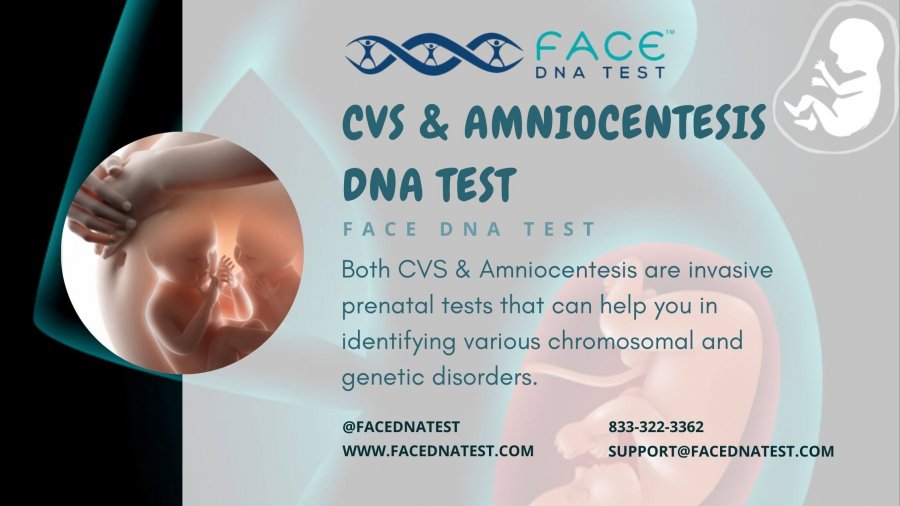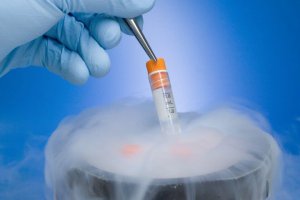PUBS is also known as Percutaneous Umbilical Blood Sampling which examines fetal blood directly from the umbilical cord and uses that sample to detect the disorder. This method is used to detect many kinds of genetic disorders that the unborn child might have, and can also tell about certain blood conditions or infections but, even so, other tests like CVS & Amniocentesis DNA Tests are preferred over this test.
In PUBS the sample is obtained by use of an ultrasound. The doctor uses ultrasound to detect the umbilical cord and then with the guidance of the ultrasound inserts a needle through the abdomen and uterus into the umbilical cord to obtain the blood sample of the fetus as the DNA from which the umbilical cord is made of is identical to the child’s DNA.
In amniocentesis, the sample is obtained by inserting a thin needle through the abdomen into the amniotic fluid of the fetus, and then that sample of amniotic fluid is used for DNA testing.
In CVS the sample is obtained by inserting a thin needle through the cervix a tissue of chorionic villi is removed from the placenta and then the sample is used for DNA testing near me .
Although all of the above methods contain their fair share of risk, even then amniocentesis and CVS is preferred over PUBS because of the more severe risk related to it like:
- Infection
- Preterm also called premature rupture of membrane
- There might be some cases where emergency cesarean was performed for delivery
- T can also cause fetal demise
- Fetal bleeding
- Change in the heart rate of the baby
Choose “face DNA test” services for the CVS test. Here, you will get testing from experienced and certified professionals within your limited budget.
Fetal genetic testing presents an opportunity for expectant parents to learn important information about the well-being of their unborn child. Prenatal testing comes in a variety of forms, each with its own steps, advantages, and disadvantages. Physicians and parents need to carefully consider a number of considerations when selecting between diagnostic procedures such as amniocentesis, CVS (chorionic villus sampling), and PUBS (percutaneous umbilical blood sampling).
Comprehending Prenatal Diagnostic Examinations
Let’s begin by going over the main distinctions between popular prenatal examinations for diagnosis:
- Amniocentesis: a tiny needle is inserted into the female reproductive organ to remove a small amount of fluid from the amniotic sac, which includes embryonic cells. Carried out between 15 and 20 weeks.
- CVS: A portion from the chorionic villi (CVS) of the embryo’s placenta is extracted via the female reproductive tract or belly. Conducted at 10-13 weeks.
- PUBS: A needle is used to remove blood from the fetus from the birth canal. Usually completed within eighteen weeks or more.
Genetic analysis and conclusive identification of genetic disorders are possible with all three procedures; however, there are differences in timing, danger, and reliability.
Physicians often suggest amniocentesis or CVS over PUBS when making this decision in diagnostic testing. There are several important ones:
- An earlier diagnostic frame allows for a diagnosis sooner and, if necessary, the ability to make decisions. Amniocentesis and CVS can be carried out closer to the beginning of the second trimester. PUBS concludes after just eighteen weeks.
- Reduced miscarriage rate: The rate of miscarriage risk associated with CVS and amnio is between 0.1-0.2%. With 1-2% documented loss rates, PUBS has a greater rate. The area where the umbilical cord inserts is exceptionally delicate.
- Greater range of ailments tested: samples from the chorionic villi and amniotic fluid, respectively, can be used to screen for a greater range of problems, including metabolism and neural tube abnormalities, which PUBS might overlook.
- Less reliance on technique: Amniocentesis and CVS use very simple needle techniques. PUBS has a higher failure rate and demands advanced imaging abilities.
- Amniocentesis and CVS need a single specimen. However, PUBS may require several samples due to their smaller sample size.
- The final message is that amniocentesis and CVS are better alternatives for diagnosis since they involve less risk, are more thorough, and may be done earlier.
What Benefits Does PUBS Provide in Comparison to Amnio and CVS?
PUBS has a few special benefits in specific situations, even if it is not usually advised as the primary diagnostic test:
More immediate outcomes when time is of the essence PUBS has the quickest turnaround time, taking only 1-2 days, as opposed to two to three weeks for Amnio or CVS. This may prove beneficial whenever essential.
Reduced risk of contamination PUBS’ specimens have reduced impurity risk vs. amnio/CVS samples obtained via the gastrointestinal tract. This can be crucial for highly precise DNA analysis.
Substitute for vulnerable individuals: PUBS may be recommended as a safer option for people who are more susceptible to amniotic fluid or CVS problems.
Backup plan in case previous tests is not successful: PUBS can offer a second chance at diagnosis if sufficient amniotic/CVS samples cannot be acquired.
Hence, notwithstanding PUBS’s benefits, amniocentesis and CVS are still the methods of choice for routine genetic diagnosis because of their reliability, precision, and safety. But when needed, PUBS performs significant specialty responsibilities.
Choose Clarity with DNA Test
Get Accurate Answers With our Test!.
-
- Accurate
- Quick Result
- Private and Secure
- Affordable

Conclusion
Throughout pregnancy, prenatal diagnostic examination provides parents with important genetic information. As primary diagnostic procedures, amniocentesis and CVS provide thorough accuracy, timely examination, and low hazards. PUBS plays a crucial specialized function when quick results or alternative access is required. Our genetic professionals at Face DNA test can assist with providing information about your prenatal testing choices and making sure you have the information you require.







Leave a Reply
Your email is safe with us.
You must be logged in to post a comment.